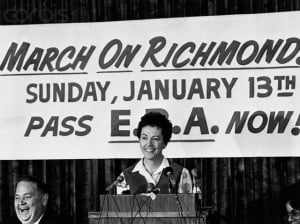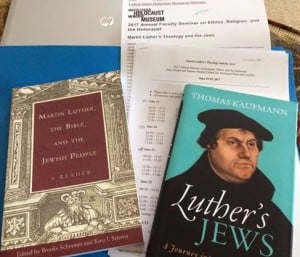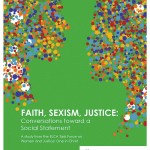For a variety of reasons related to my teaching and research, I’ve read three books in the last year by Mormon feminists across the generations:
Wife No. 19, by Ann Eliza Young, 1876.
From Housewife to Heretic: One Woman’s Spiritual Awakening and her Excommunication from the Mormon Church, by Sonia Johnson, 1989.
The Book of Mormon Girl: A Memoir of an American Faith, by Joanna Brooks, 2011.
These women and their stories are fascinating windows into feminist awakening and religious and political activism in three very different eras.
 Ann Eliza Young, apostate wife of the prophet Brigham Young, left her lion of a husband, sued for divorce to force the court to recognize their union and her rights, and became an acclaimed and defamed public speaker. She testified before a Congressional committee about how damaging polygamy was for women in 1874, after her speaking tour took her through the town in which I now live, Jacksonville, Illinois.
Ann Eliza Young, apostate wife of the prophet Brigham Young, left her lion of a husband, sued for divorce to force the court to recognize their union and her rights, and became an acclaimed and defamed public speaker. She testified before a Congressional committee about how damaging polygamy was for women in 1874, after her speaking tour took her through the town in which I now live, Jacksonville, Illinois.
Sonia Johnson describes her feminist awakening in conjunction with activism for the Equal Rights Amendment in the 1970s and 1980s.  She too testified before a Congressional committee, in 1978, on behalf of Mormons for the ERA. A heated exchange between her and Utah Senator Orrin Hatch gained national attention, and Johnson was eventually excommunicated from her church, the one she believed supportive of women and men equality.
She too testified before a Congressional committee, in 1978, on behalf of Mormons for the ERA. A heated exchange between her and Utah Senator Orrin Hatch gained national attention, and Johnson was eventually excommunicated from her church, the one she believed supportive of women and men equality.
Joanna Brooks tells the story of the next generation of women in The Church of Jesus Christ of Latter-day Saints. A sunny childhood in Southern California filled with images of Marie Osmond and assurance of eternal salvation gave way to disillusionment in the early 1990s when Brigham Young University began firing and denouncing several scholars and feminists, Brooks’ teachers and mentors among them.  Returning her diploma in protest, Brooks laments a separation from the tradition she fully embraced. Today, she speaks out as a Mormon advocate for gay and lesbian rights, putting her at odds with the church she still wants to love.
Returning her diploma in protest, Brooks laments a separation from the tradition she fully embraced. Today, she speaks out as a Mormon advocate for gay and lesbian rights, putting her at odds with the church she still wants to love.
In several ways, these stories fit well into the feminist waves metaphor: Young is in many ways a first wave feminist, advocating for basic legal protection for women; Johnson grew into her voice as a radical second wave feminist; Brooks as a third wave feminist understanding how feminism is about race, sexuality, and other justice issues as much as it is about gender equality.
The way that religion factors into each woman’s story is also significant. Not enough attention in women’s studies is paid to substantial understanding of how religious feminist activists relate to their faith traditions and work for their transformation. These three women have notably different ways of doing that. Young declaimed and denounced Mormonism publically, and became a nineteenth-century seeker of sorts after her stint in the public eye, trying out Methodism, Christian Science, and other spiritual beliefs as the years progressed. Johnson tried valiantly to make Mormon Feminism a respected reality, but eventually the church refused her a place. Brooks is still making it work. Attending church, instilling beliefs in her daughters, standing on the margins of a tradition that hasn’t kicked her out (yet?).
Of course, the LDS is not my church, but these feminist activists tell stories that anyone who has reckoned with the systemic inequalities in a religion, and tried to say or do something about it, can understand. The pressure from a family; the public scorn and harassment; the longing for more and the conviction of being called.
I commend their voices to all who have ears to hear.











